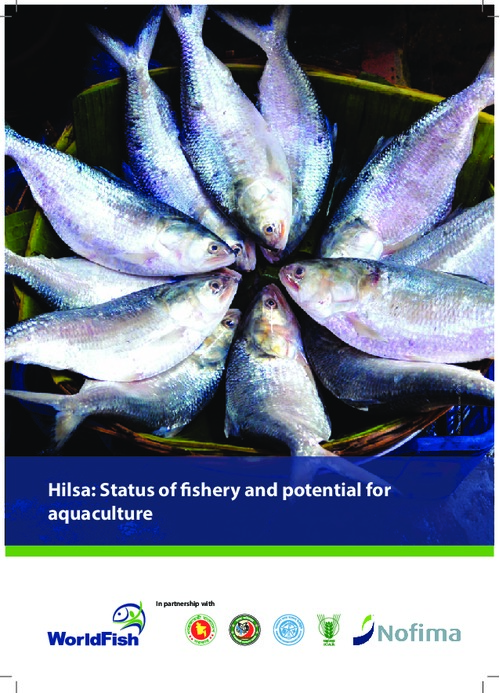Hilsa: Status of fishery and potential for aquaculture

Hilsa: Status of Fishery and Potential for Aquaculture is a proceedings book, which is edited by an international team of experts and authored by 10 international expert teams working on different disciplines of the hilsa shad. Hilsa is a widely distributed fish within the Bay of Bengal region and harvested in the waters of Bangladesh, India and Myanmar. It is famous worldwide for its delicious taste and superb texture, which persist for a long time. Hilsa is unique in that it contains high amounts of both proteins and lipids. The fish is also rich in amino acids, minerals, micronutrients, vitamins, fatty acids and good quantity of omega-3 that has made the fish ideal for health-conscious people, especially women and children. There has been a growing interest in understanding the status of hilsa stock within the region and exploring its potential for aquaculture with hatchery produced seeds. Several attempts have been made on domestication, breeding and raising of juveniles in brackish water ponds in both India and Bangladesh, but success has been very limited, indicating that coordinated extensive research and development initiatives are needed to establish aquaculture of this species. This book presents 10 review chapters that include biology and ecology of hilsa; status of the hilsa fishery in India and Bangladesh; hilsa fishery management; seed production and rearing; food, feeding and nutritional requirements; status of aquaculture; population genetics; market trends; nutritional values; consumption and utilization as well as hilsa’s social, cultural and religious importance.
Permalink
Date Available
Type
Publisher
Countries
Copyright
CC-BY-4.0
Research Themes
Topics
Language